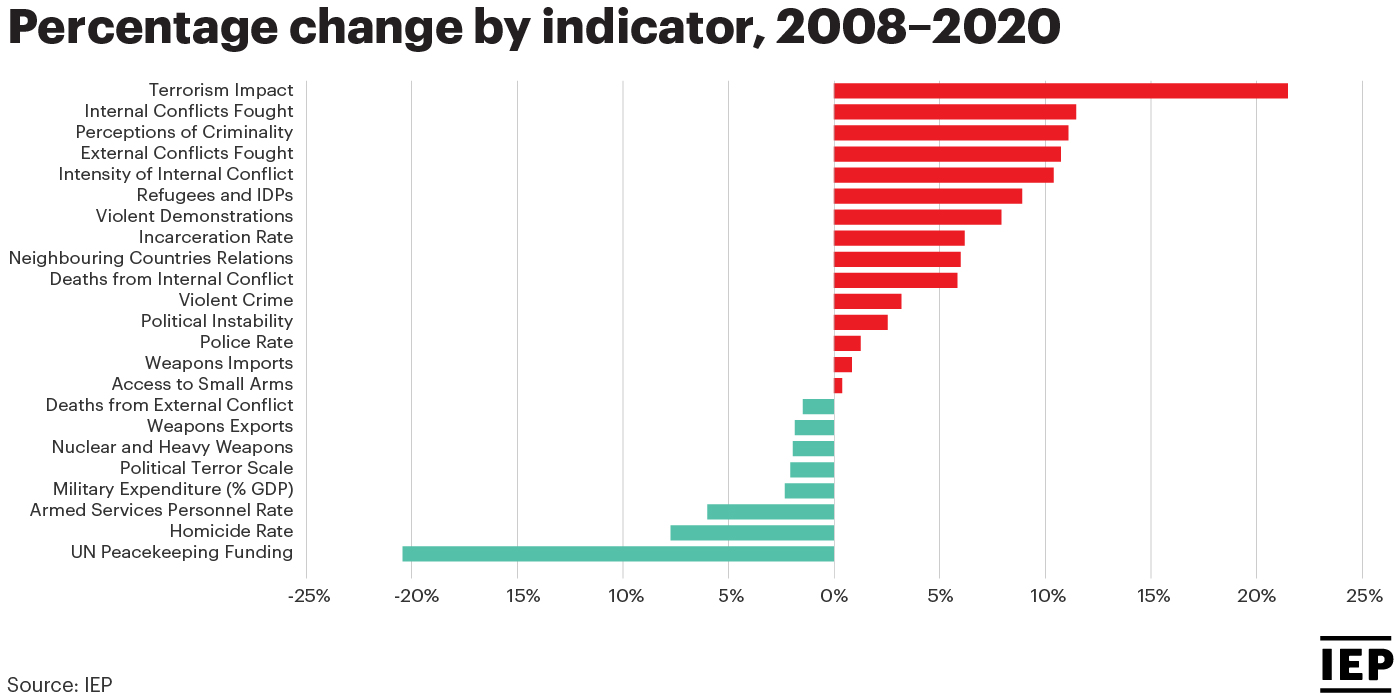The GPI was founded by Steve Killelea, an Australian technology entrepreneur and philanthropist. It is produced by the Institute for Economics and Peace, a global think tank dedicated to developing metrics to analyse peace and to quantify its economic benefits.
The Global Peace Index measures a country’s level of Negative Peace using three domains of peacefulness. It comprises 23 indicators of the absence of violence or fear of violence.
The first domain, Ongoing Domestic and International Conflict, uses six statistical indicators to investigate the extent to which countries are involved in internal and external conflicts, as well as their role and duration of involvement in conflicts.
The second domain evaluates the level of harmony or discord within a nation; eleven indicators broadly assess what might be described as Societal Safety and Security. The assertion is that low crime rates, minimal terrorist activity and violent demonstrations, harmonious relations with neighbouring countries, a stable political scene and a small proportion of the population being internally displaced or made refugees can be equated with peacefulness.
Six further indicators are related to a country’s Militarisation —reflecting the link between a country’s level of military build-up and access to weapons and its level of peacefulness, both domestically and internationally. Comparable data on military expenditure as a percentage of GDP and the number of armed service officers per head are gauged, as are financial contributions to UN peacekeeping missions.
This chart below shows the percentage change in score for each indicator from the 2008 to the 2020 Global Peace Index (GPI) methodology used to measure global levels of peace. Of the 23 GPI indicators, 15 recorded a deterioration with the remaining eight recorded an improvement. Only two indicators had an overall change of more than 20%. The terrorism impact indicator deteriorated by 21.2%, and the UN peacekeeping funding indicator improved by 20.4%.
